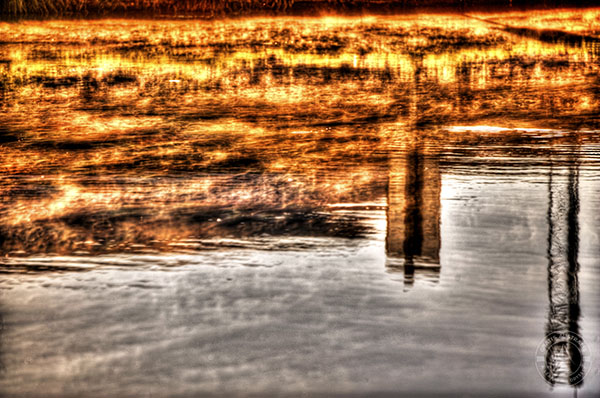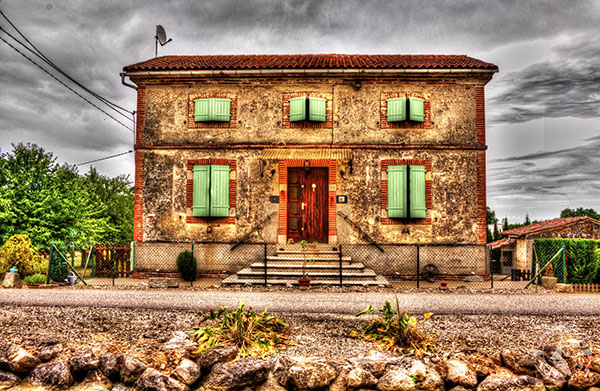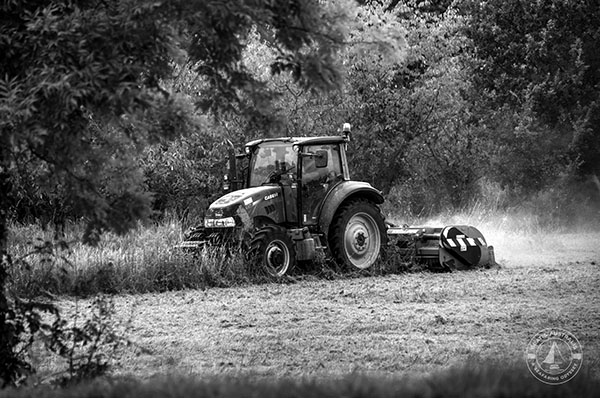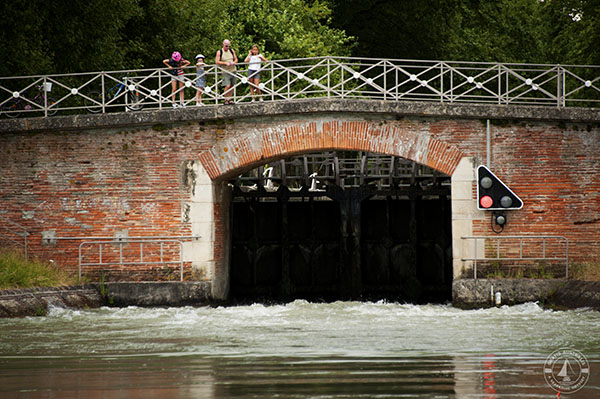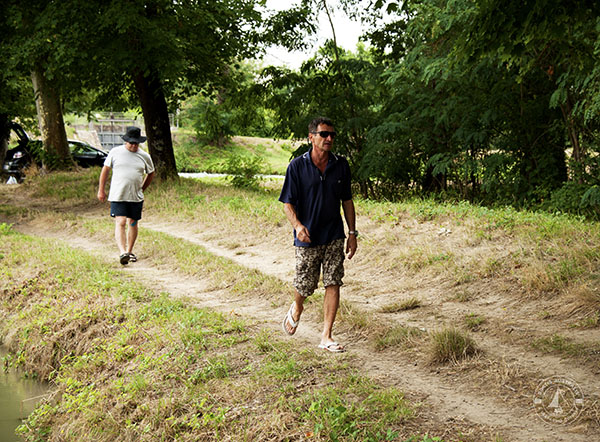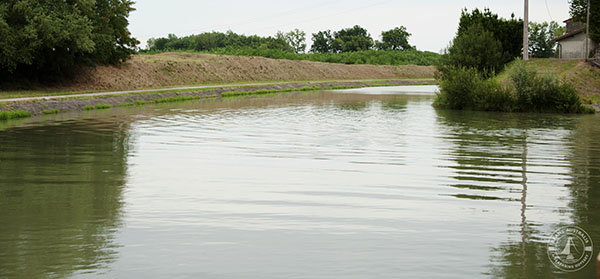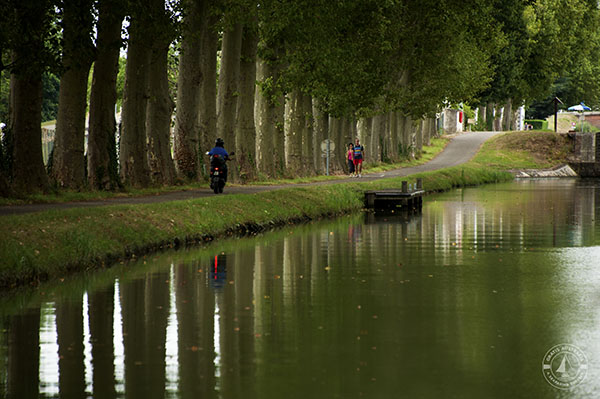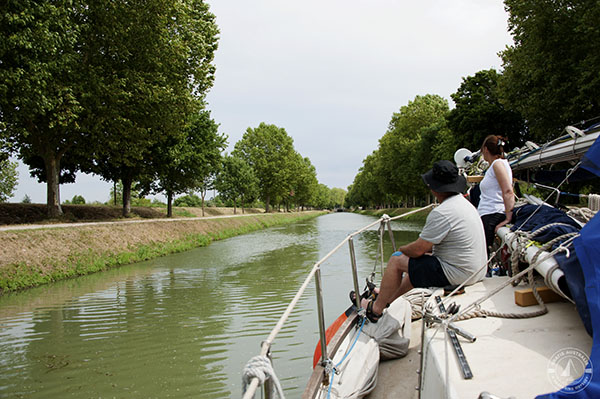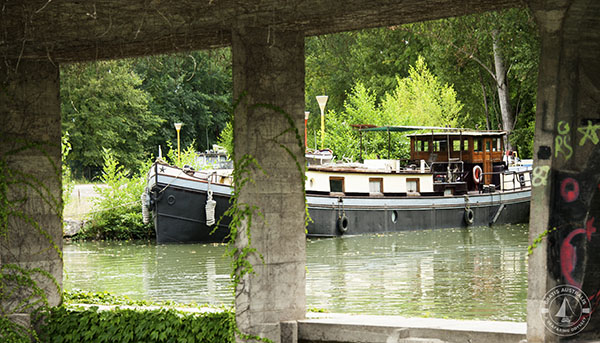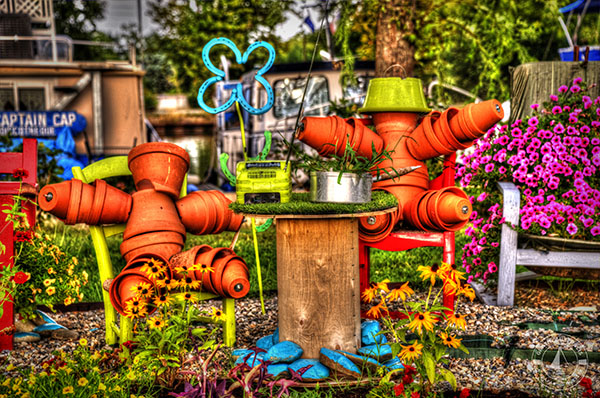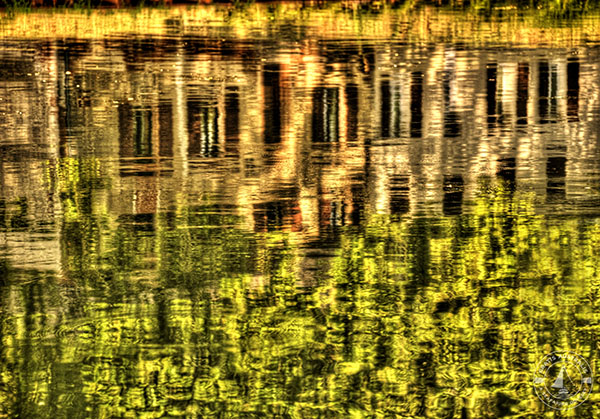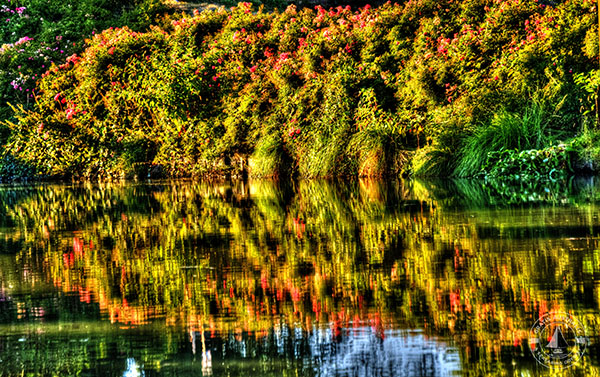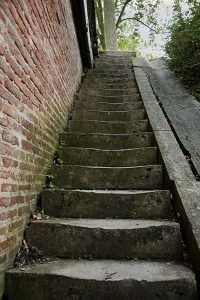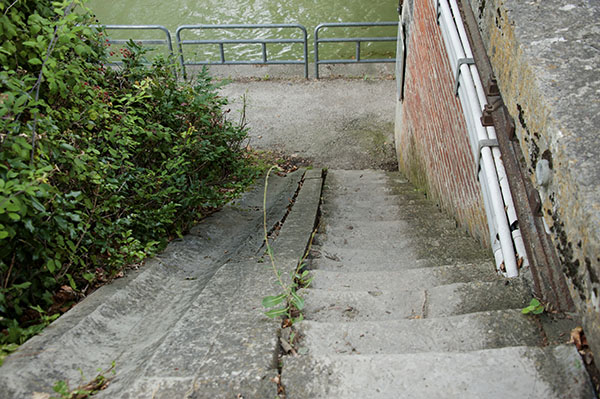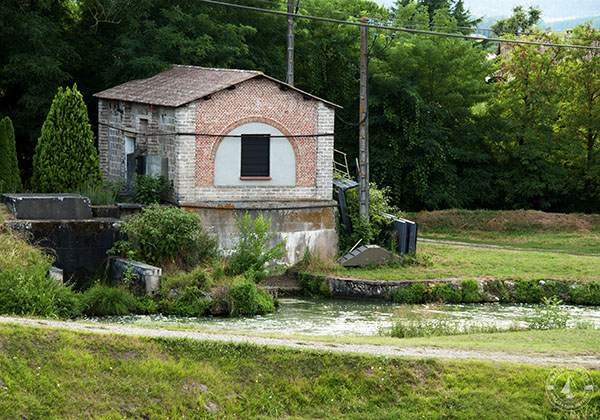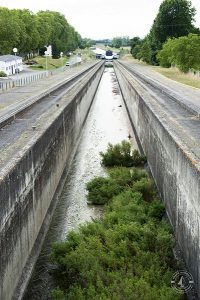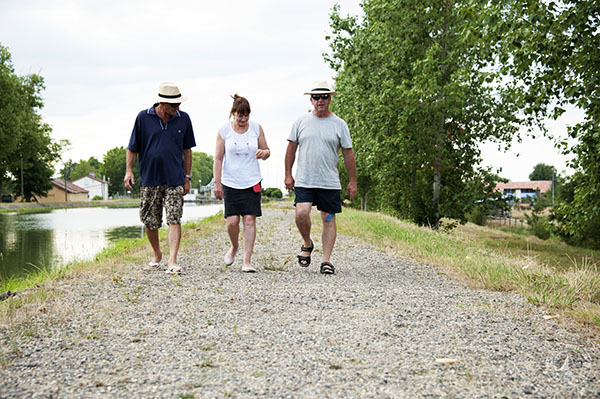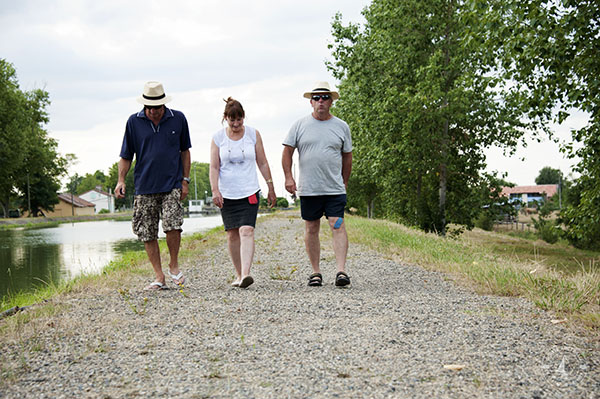Created from the night’s dew that had settled upon the plants upon the bank, mist arising upon the water as the sun rose created a new beauty for the observing eye this morning.
Bob and Rob moved the throttle to from the cockpit to the pedestal on the outdoor helm this morning. Now our captain has full control rather than relying on me to judge the amount of adjustment to speed he requires and the further bonus is an additional hand on deck.
The approach to lock one went as planned. We were congratulating ourselves and believed we had a handle on the wretches at last, but the second lock was bitch and soon proved us wrong. Making it past the outflow was the issue, and was this one strong! A foaming mass of water burst forth, forming a massive swirling undercurrent.
The bow was caught and underwent a rapid turn to port. Using all 85 horsepower in reverse, as a result of having so much forward current, even this wasn’t enough. Into the bridge wall she went: all we could do was watch in horror as the furlers took the full brunt and the mast and Gratis were pushed back.
Was that enough? Oh no! On inching out of that same lock, there was enough water pressure that caused Gratis to head starboard and the largest of the fenders caught. The forward thrust of Gratis thereby causing the stanchion upon which it was tied to bend. It was now that Bob realised the feathering propeller wasn’t fully engaging and most likely something was wrapped around one or more of the blades or the nub which did not allow the blades to move to the fully reversed position; or the new cables were not adjusted correctly.
Over to the bank we headed: moored, the damage was inspected, and Bob made alterations to the gear and throttle cables. Heading up stream once again, Bob tested the throttle before heading under the bridge up ahead: the throttle was still playing up. 2700 revs: forward, reverse, forward, reverse went the throttle. At last, full engagement took place and Gratis motored as she should. It turned out to be muck on the prop after all.
The only light at the end of the tunnel was the knowledge that even the Rosa with her 100+ horsepower loses control and hits the locks on occasions.
As a result of the later start and the hassle with the prop, we only made the 9km to Montech.
According to the write ups, the tourist was advised this is not a good place to stay, so we were pleasantly surprised upon our arrival. Pontoons were provided with brand new electrical/water boxes. What appears to be a recently built restaurant/café was to starboard whilst the capitainerie/tourism office was down the opposite end. A small shady park with benches for resting upon was outside our doorstep, whilst opposite the bank was tree lined. Although a little noisy with work going traffic this morning, yesterday evening was blissfully peaceful and we all awoke fully charged for today’s journey.
Just prior to entering the town, is a five lock system, alongside which runs the Montech water slope, designed for boats in the 30 – 40 metre range. Measuring 443m in length, 6m in width it runs up a 3% slope. A wedge shaped section of water with a boat floating upon it is pushed up slope by two specially adapted railway engines, each with 1,000 horsepower. To eliminate risk, a triple brake system was installed. Our day was completed with an amble down to view this unusual piece of technology.
Up a flight of stairs,
alongside of which grew thick berry bushes.
Fenced off and full of weeds, sadly, it appears to not be in use now. The old lock house sat across the way.
A large hole in the fence enabled us to glean a slightly closer look from the bridge that crosses the system. What a gold mine the Frenchies could have here.
Closing the 5 locks which run alongside, the average canal boaties would be quite happy to pay a few euro to undertake the unique experience of travelling up the water slope.
